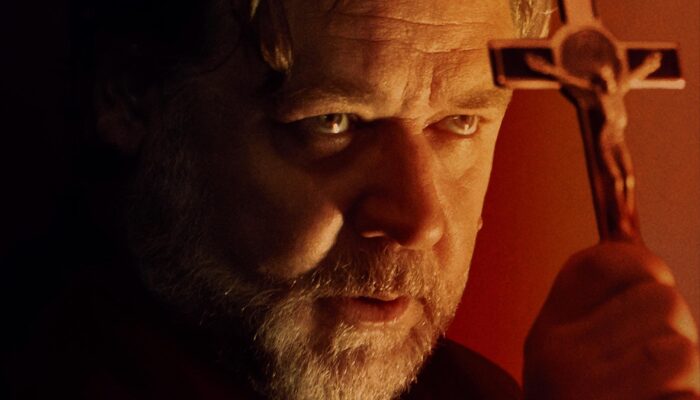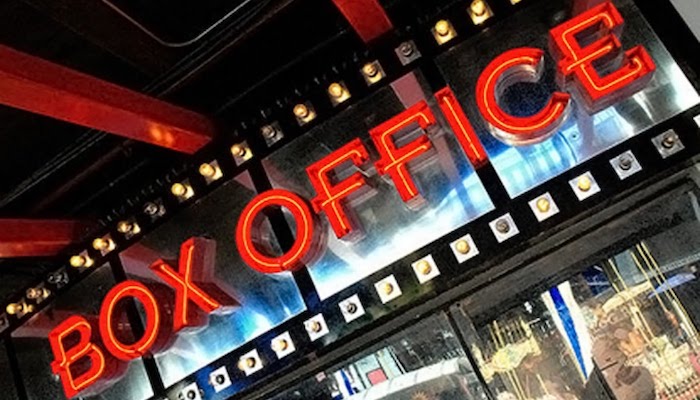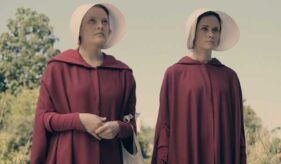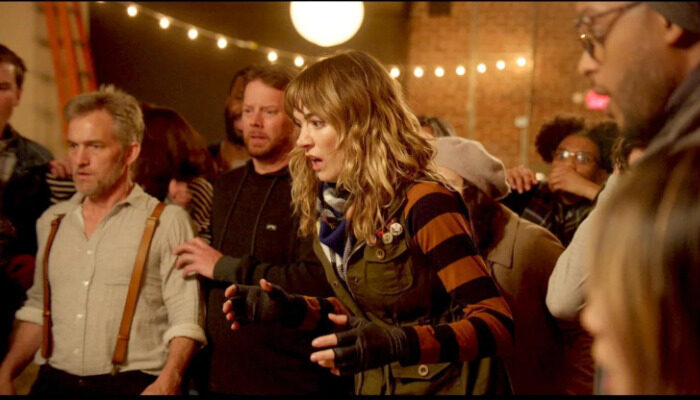TV Review: 9/11: ONE DAY IN AMERICA: Season 1, Episode 1 [Tribeca 2021]
9/11: One Day in America Season 1 Episode 1 Review
We tend to only remember major tragedies within the larger scope of history. Individual accounts get bulldozed over, and nuance is discarded in lieu of a blanketed cultural narrative. But if America is truly the melting pot of culture that it sells itself as, then we as social beings would do well to take the whole variety of experiences into account. We can’t appreciate the patchwork quilt of diversity without admiring the individual pieces between the seams.
Such an approach is what director Daniel Bogado channels with his documentary series 9/11: One Day in America, a co-production between National Geographic, the National September 11 Memorial & Museum, and 72 Films. Gone are the overarching political narratives that attempt to understand the tragedy of September 11, 2001, and in its place are the individual accounts of anxiety and fear that are forever burned into New Yorkers’ minds.
The first episode, entitled “First Response”, focuses on the early morning hours of September 11, 2001, when the planes first hit the Twin Towers – roughly 6:00 to 10:00 AM. Sifting through what’s undoubtedly a gigantic trove of archival footage, Bogado weaves numerous personal accounts of the attack from those who experienced it at ground zero, interspersed with the occasional air control recordings and other documentation from the hijacked planes.
Just to name a few of the accounts: a New York Fire Department chief remembers how, due to his proximity over a routine gas check in lower Manhattan, his squadron was the first to arrive on the scene and thus became in charge of the whole rescue operation; a businessman recalls escaping from the lobby of the World Trade Center Marriott (situated between the Two Towers) and struggling to find medical help for a woman suffering severe burns; a chef in the same hotel remembers the destruction and death he witnessed within the Center’s courtyard; a woman in one of the tower’s top floors relives the fear she felt before the rescue team arrived.
Besides the obviousness of personal hardship each of these people experienced during these harrowing hours, Bogado also stresses the individual loss that they all simultaneously suffered. The NYFD chief lost his brother (who was also a firefighter) when he went on a rescue mission in the north tower; the businessman lost his sister and niece, who in a sad turn of events were on one of the hijacked planes; the chef lost his friend and co-worker during their escape, assumedly crushed to death by taking an alternate escape route; and the woman on the upper floor never again saw the men who rescued her, as they died while trying to save others higher up in the building.
Considering how digital video and mobile technology wasn’t nearly as prevalent nor as advanced two decades ago, it’s incredible how Bogado acquired all this archival footage – not just from news reporters and first responders, but also amateur camcorder footage from seemingly random passersby. It’s even more incredible how some of that footage contains the particular characters in the narrative’s focus (particularly an aerial shot of the businessman when he and the burned woman finally found an ambulance with paramedics to help her). Though his executive producers – Dan Lindsay and T.J. Martin, documentarians themselves who have experience acquiring and sifting through thousands of hours of archive footage – were likely an incredible resource in this process.
It is interesting, however, how 9/11: One Day in America is strikingly apolitical. For an event that infused the cultural mindset with a paranoia not seen since the end of the Cold War, and an event that continues to have a lasting effect on both domestic and foreign policy (as well as civil and human rights), it’s notable that any further/deeper analysis of that is left out – and, depending on your point of view, feels slightly irresponsible in its doing so.
Granted this is only the first of six episodes, so a critique as such could be jumping the gun. Also, the lack of political narrative forces a perspective solely onto the horrific violence and tragic loss of life, which serves to remind us of the everyday people whose lives were scarred by this day. Bogado’s lack of takes by state actors and politicians in favor of their constituents who witnessed it firsthand is a clear example of focusing on the patches themselves and their own interconnectedness, rather than an opaque whole that would leave space for blurred interpretations.
What results is a scary yet solemn account of one of the most defining moments in twenty-first century America, and the resilience of individual citizens as they fought to survive that day. Hopefully the remainder of the series will be approached with an equal amount of tact.
Leave your thoughts on this 9/11: One Day in America Season 1 Episode 1 review and this episode of 9/11: One Day in America below in the comments section. Readers seeking to support this type of content can visit our Patreon Page and become one of FilmBook’s patrons. Readers seeking more Tribeca Film Festival news can visit our Tribeca Film Festival Page, our Tribeca Film Festival Twitter Page, and our Film Festival Facebook Page. Readers seeking more TV show reviews can visit our TV Show Review Page, our TV Show Review Twitter Page, and our TV Show Review Facebook Page. Want up-to-the-minute notifications? FilmBook staff members publish articles by Email, Twitter, Facebook, Instagram, Tumblr, Pinterest, Reddit, and Flipboard.
Related Articles
FilmBook's Newsletter
Subscribe to FilmBook’s Daily Newsletter for the latest news!













